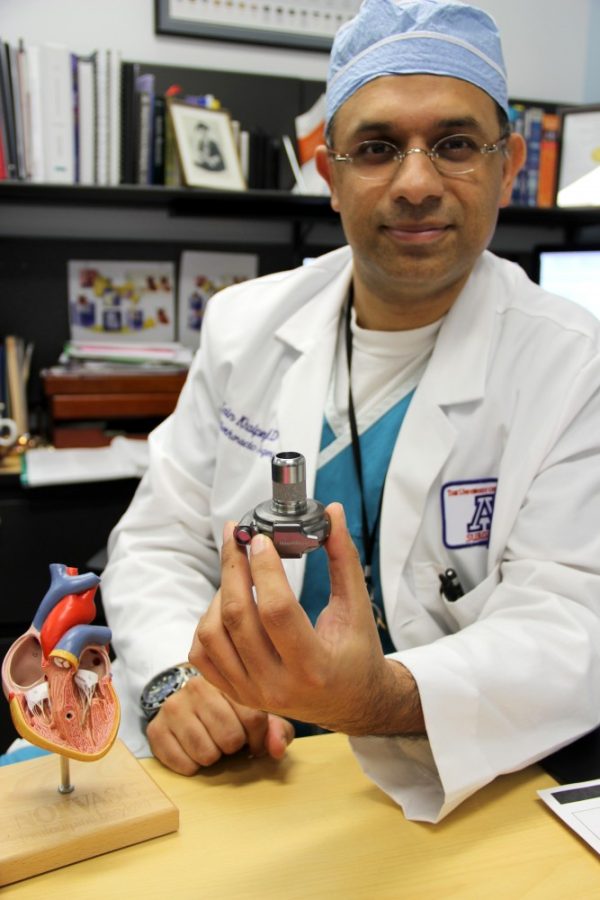Two surgeons at the University of Arizona Medical Center have performed the world’s first robotic implantation of a ventricular assist device.
The Heartware Ventricular Assist Device is a small, mechanical device that is attached to the heart to help pump blood throughout the body. Unlike artificial hearts, which generally replace the heart altogether, VADs are intended to sustain the function of the heart while leaving the organ almost entirely intact.
Using robotic instrumentation, Dr. Zain Khalpey and Dr. Robert Poston have implanted the device in a total of four patients so far.
“It’s very humbling,” said Khalpey, an associate professor of surgery and director of clinical and translational research for UA’s Department of Surgery. “But, it’s also very exciting because it really takes forward a field which is looking toward new generation ventricular assist devices.”
The device, which is about the size of a golf ball, Khalpey said, continuously sucks blood out of the left ventricle, the largest chamber of the heart, and propels it into the aorta, the artery that supplies blood to most of the body. The HVAD connects to a control unit and power source via a thin cable that exits the body near the waistline.
“[The technology] has catapulted into being science fiction, but really, it’s not,” Khalpey said.
The HVAD allows patients to live a relatively normal life while awaiting a heart transplant. And, in some cases, the device is left in permanently.
While VADs have been around for several years, one had never been robotically implanted before.
A professor of surgery and the medical director of the Adult and Robotic Cardiac Surgery Program at UA’s Department of Surgery, Poston specializes in robotic heart surgery, in which robotic arms and instrumentation are utilized to perform surgical procedures on the heart without splitting the breastbone.
“I’ve never felt good about opening up people’s chests. That’s why I’ve done robotic heart surgery,” Poston said.
The robotic VAD procedure requires an incision on both the left and right side of the chest cavity, he said. The robotic instruments, including a scalpel, forceps and a tiny camera, go in through the right-side and insert the device in the left.
Poston said he believes that robotically implanting VADs could be a safer, more cost-effective option when it comes to this type of surgery in the future.
Of the four surgeries performed using this technique, the procedure has resulted in less bleeding and a decreased need for blood transfusions, as well as a shorter recovery time than in traditional surgeries, he added.
“It’s not a Nobel Prize kind of thing,” Poston said. “But it is definitely something that is a substantial improvement on the way it was done.”
Terry Scott, 58, has endured heart problems for more than 20 years. He was the second patient to undergo the groundbreaking procedure. Scott said he is grateful that Khalpey and Poston were able to provide him with what they call a “bridge to transplant,” and that he is glad to be one of the first beneficiaries of a robotically implanted VAD.
“It feels pretty cool. Dr. Khalpey said I was famous,” he said.
Khalpey said that he enjoys seeing patients leave with a new lease on life.
“With these devices, it’s changing their lives,” he said. “They’re able to pick up their children, they’re able to drive, they’re able to have a normal life.”









